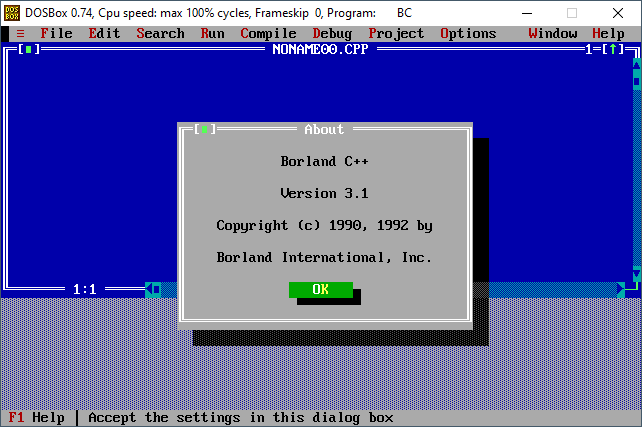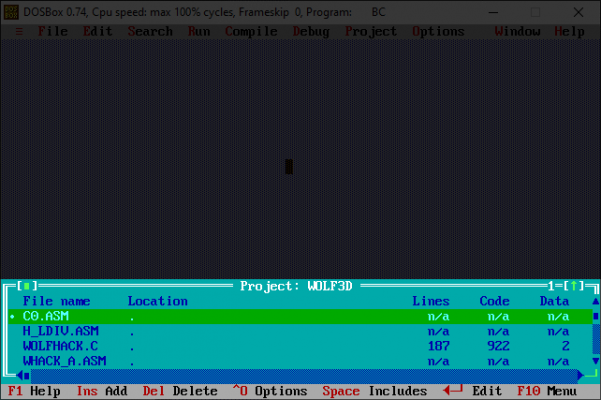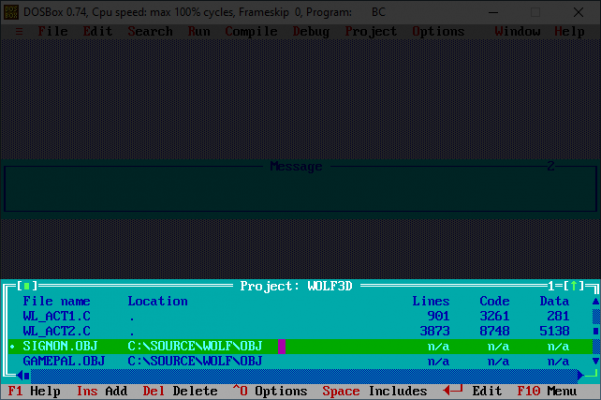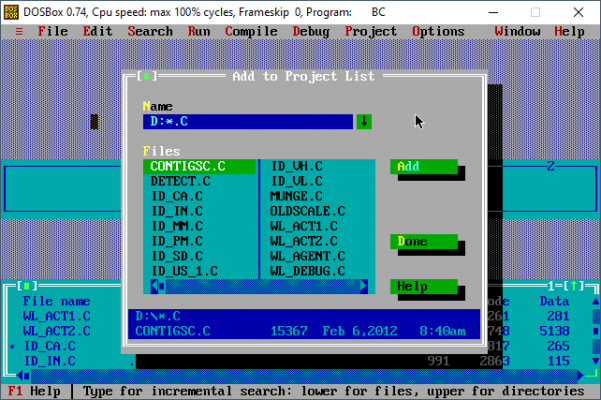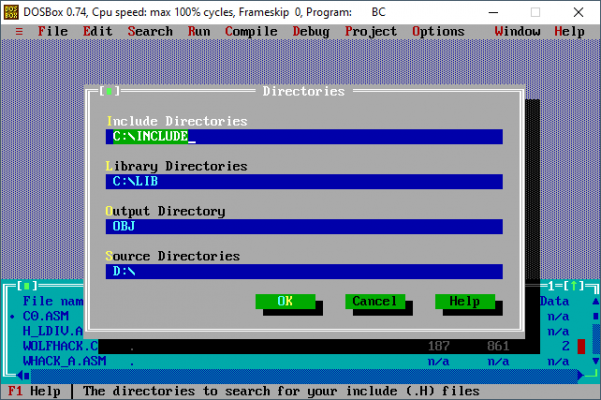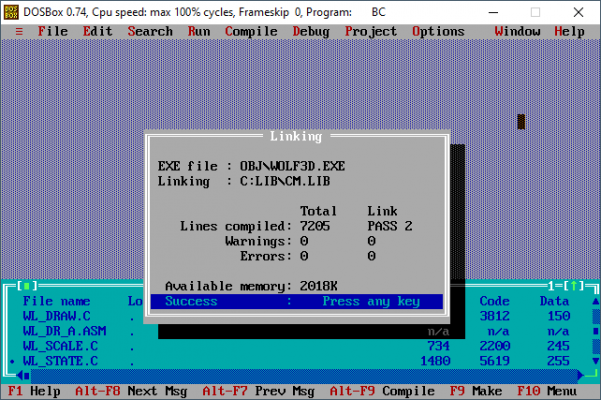Thanks to John Carmack releasing the source code to the public back in 1995, people interested in making their own games can modify the engine itself to create whole new features and effects.
At the end of this guide you will have learned how to compile a working exe for the full version of Wolfenstein 3D for DOS.
The tools you will need:
- Borland C++ Compiler 3.1 - Once set up, this is the program that will take the source code and turn it into a usable executable file. A copy is available for download at the bottom of this page.
- DosBox - On modern systems such as Windows 10 which don't include DOS, DosBox provides the ability to emulate the systems needed for the compiler and Wolfenstein 3D to run.
- The Wolf3D Source Code - The most important part. With no source code, there's no game to compile!
- A text editor - While it is possible to edit the source code from within Borland (And indeed this is how many of us used to do it!), it is far easier to use another program for the actual editing.
While Notepad will suffice, it is recommended to use Notepad++, a robust and completely free text editor with extra features to make reading the code easier.



